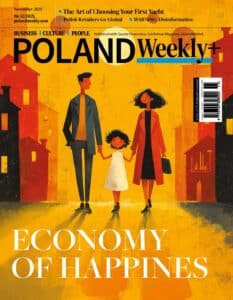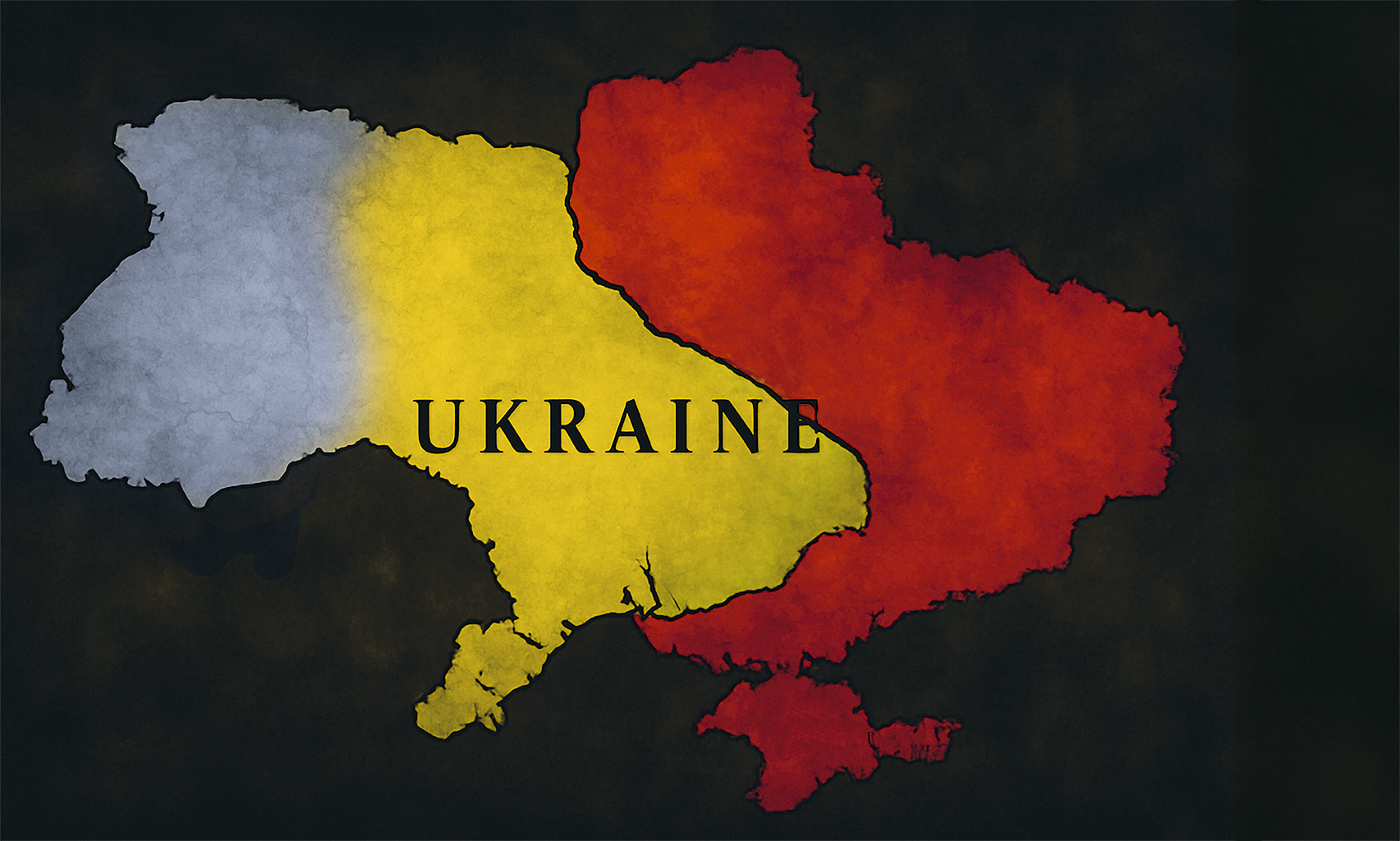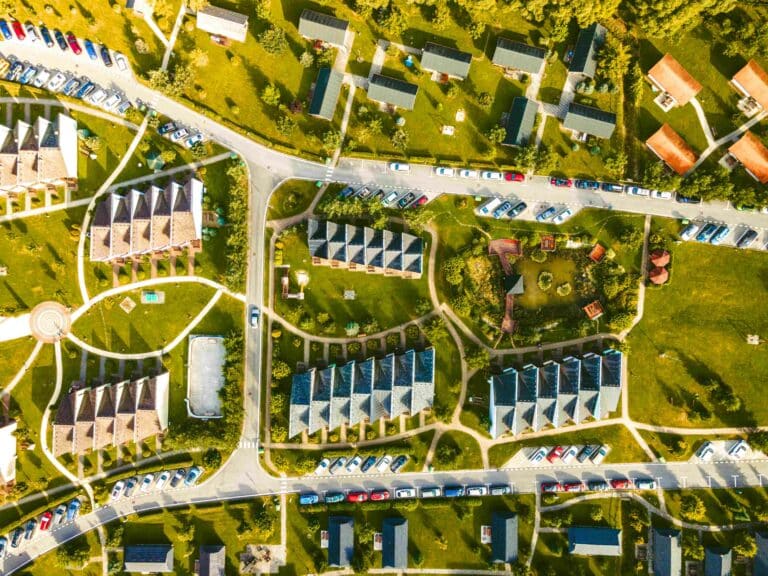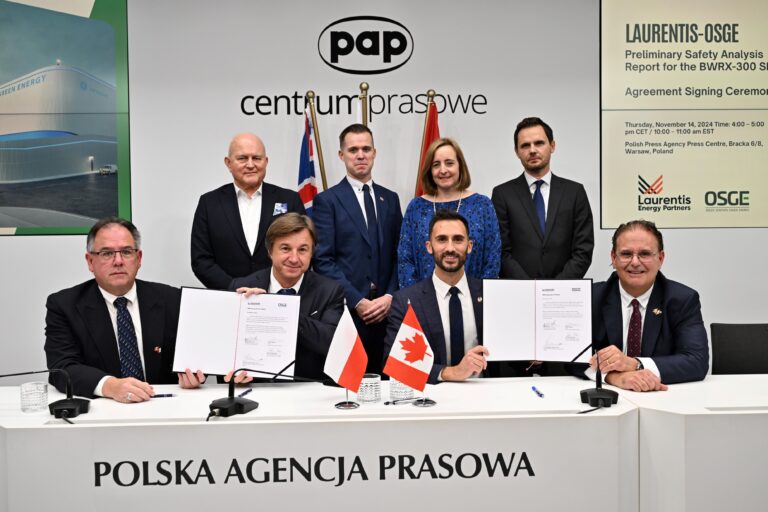An Economy Driven by War andthe Division of Ukraine
In the shadow of the war in Ukraine, Europe’s geopolitical map is shifting. Russia is ramping up arms production beyond the needs of the current conflict, raising concerns about its future intentions—perhaps even toward NATO. Ukraine, on the other hand, is grappling with an exhausted army, corruption, and the loss of control over parts of its territory. Will the West unite in time before Russia exploits its opponents’ weaknesses? In this struggle for influence, Poland could play a crucial role—as a buffer, a partner, or even a leader of a new order in Central and Eastern Europe.
Russia is publishing data suggesting strong economic growth, but this is largely due to the massive expansion of its defense industry—arms production has at least doubled and now exceeds the requirements of the war in Ukraine. Some experts claim that Russia is preparing for another conflict—possibly even a war with NATO. The Baltic states appear especially at risk, particularly Latvia, where nearly 40 percent of the population speaks Russian, though not all are ethnically Russian. Lithuania is also in a danger zone—not because of demographics (Russians comprise about 6%), but because the shortest route to the Kaliningrad enclave runs through its territory, which is of strategic importance.
If asked whether Russia has the means to strike, the answer is yes. Europe, politically fragmented and incoherent, is currently unable to mount an effective resistance. Only a united Europe can stop Russia’s ambitions. As things stand, we are too weak.
Let me quote Sienkiewicz and the famous anecdote from The Trilogy, in which Onufry Zagłoba asks: what is stronger—an army of lions led by a sheep, or an army of sheep led by a lion? The answer is clear: even a weaker army, if well led and organized, is more effective than one that’s scattered. It’s a fitting metaphor for Europe’s current state. Integration is happening—but far too slowly.
Ukraine Under Pressure: A Failing Front, Corruption, and a Race Against Time
As far as Russia is concerned, Ukraine remains the central issue. For Moscow, Ukraine is lost for good—Ukrainians have overwhelmingly rejected Russia and often express outright hostility toward Russians. While the Ukrainian government is trying to prevent violence and ethnic tensions, the fact remains that Russia has lost its social influence in the country.
But Ukraine faces serious challenges. The army is in dire condition—soldiers are exhausted, and reserves are running out. One example is a battalion trained in France that deserted upon arriving at the front. Numerous reports point to corruption within the military—even high-ranking officers have been arrested for embezzlement. All of this weakens morale and the army’s structure.
Russia is playing the long game—like a hammer repeatedly striking one spot on armor, hoping it eventually breaks. If Ukraine’s front lines or administrative structures collapse, Russia will be ready to seize the moment and take the initiative.
The situation is so serious that it has changed the US approach. After initially halting aid to Ukraine, the US has resumed defensive arms deliveries—such as anti-aircraft systems—following talks between Trump and Zelensky. This shows that Washington recognizes Ukraine’s geopolitical significance—it would rather keep Ukraine on its side than allow it to fall into the Russian-Chinese bloc.
Russia also wants to end the war—but on its own terms. In a recent interview with the Hungarian press, Foreign Minister Lavrov outlined those terms: recognition of conquered territories, and no ambition to absorb all of Ukraine, which was the original goal.
The failure to rebuild an imperial Russia that includes Ukraine means Moscow is growing increasingly dependent on China. The Kremlin would like to avoid this, but it’s becoming clear that without China’s support, Russia cannot function as an independent global power.
Russia is steadily losing its ability to act independently in international politics. It’s becoming a client state of China, which will impose its own conditions in many areas—conditions that won’t necessarily align with the interests of the Russian people. Russians are beginning to realize their situation is deteriorating, and the dream of regaining superpower status is becoming more and more unrealistic—even within the next decade.
A full collapse of Russia isn’t likely, though some analysts consider it. A more plausible scenario is gradual dependence—economic and perhaps even territorial—on China. Beijing continues to seek the return of lands lost in the 19th century, such as Vladivostok and large parts of Siberia. Chinese schools teach about the “unequal treaties” signed with Russia, signaling that China has neither forgotten nor forgiven. For Russia—used to dominance in the Far East—this is a serious threat.
The Geopolitical Puzzle: Ukraine’s Future and Poland’s Role
Russia is sinking deeper into the war in Ukraine. Eventually, Moscow will have to come to the negotiating table. Its known conditions include recognition of territories it currently controls—as well as others not yet fully occupied, such as parts of Zaporizhzhia and Kherson. A new border along the Dnipro River is one possible scenario—similar to what happened at the end of the 17th century when the Polish–Lithuanian Commonwealth lost those lands to Russia under the Treaty of Grzymułtowski (1686).
The Russian concept of “Novorossiya” is an attempt to rebuild its former sphere of influence—from Donbas to Odesa. The goal would be to cut Ukraine off from the Black Sea. While this outcome is unlikely—the West won’t accept Ukraine losing access to the sea—Russia’s annexation of Crimea is becoming a de facto reality. Even Donald Trump has said that Ukraine “lost Crimea without firing a shot.”
Russia also continues to invoke the idea of “denazification” of Ukraine—by which it means, among other things, outlawing organizations associated with the UPA and OUN. Russia is counting on a reaction from Poland, which also has a negative stance toward these groups, especially in the context of the Volhynia massacre. Unfortunately, Ukrainian authorities fail to grasp the seriousness of this issue—monuments to figures like Roman Shukhevych, responsible for atrocities against Poles, are still being erected.
These weren’t random acts of cruelty—they were a calculated political operation to “cleanse” Ukraine of its Polish population and ensure postwar dominance. This historical trauma still affects today’s relations. Removing the Polish population gave Ukrainians the upper hand in a potential postwar plebiscite—which, however, never happened. Borders were set in Yalta and Potsdam. Final territorial decisions were made by Stalin, who later gave parts of Poland’s territory—rich in coal—to Ukraine.
So plebiscites were never realistic. Sadly, Ukrainian leaders have made serious mistakes. Poland and Ukraine were, are, and will remain neighbors—whether one likes it or not. Even if Ukrainians don’t want cooperation, they have no choice but to work with Poland.
Russia has a vision for Ukraine’s future—it wants demilitarization and neutralization. That’s the official negotiating position. At the same time, behind closed doors, Russians are presenting various plans to divide Ukraine. Dmitry Medvedev has shared maps showing partition scenarios in which eastern and southern Ukraine—inhabited by ethnic Russians or Russified Ukrainians—would fall under Russian control.
Russia proposes that the rest of Ukraine—especially around Kyiv—become a neutral state, friendly to Russia but independent. There’s no going back to the Yanukovych era, but Moscow expects this part of Ukraine to stay out of NATO, be demilitarized, and not adopt an anti-Russian stance.
Russia’s demands for “denazification” include removing OUN-UPA influence and guaranteeing minority rights—especially for Russian culture. These conditions would apply to the “Kyiv Ukraine,” not the territories already annexed.
Western Ukraine, Polish Influence, and Future Alliances
Western Ukraine is a separate issue. As early as 2000, Putin jokingly suggested to Prime Minister Tusk the idea of dividing Ukraine and handing the land up to the Zbruch River to Poland. While Poland rejected such thinking and supports Ukraine’s territorial integrity, Russia continues to push this narrative—arguing that western Ukraine doesn’t culturally or ideologically belong with the rest of the country.
Russia considers itself the heir to Kievan Rus, while western Ukraine—with its Greek Catholic population, pro-Western orientation, and distinct cultural identity—poses a threat to this narrative. That region has preserved a Ruthenian tradition—one that is not Russian—and this is something Moscow cannot accept.
There have also been ideas floated about forming a new model of cooperation reminiscent of the old Polish-Lithuanian Commonwealth—today envisioned as a Polish-Ukrainian union. Such a project could bring Ukraine closer to the West, even without formal EU membership, and give Poland a leading role in rebuilding Ukraine.
Ukraine is plagued by rampant corruption—up to 40% of foreign aid is reportedly being stolen. In this context, some propose that Poland—more stable and better organized—should become Ukraine’s key partner in reconstruction and implementing reforms, especially in local governance, which has been a Polish success story.
In the long term, a loose confederation could emerge—Ukraine would remain fully sovereign but closely integrated with Poland and the European Union. Not through absorption, but through partnership. Though still just a concept, it’s one worth considering.
Poland, too, faces political and social challenges. Yet despite deep divisions, there is reason for cautious optimism—our country is well-organized, and its role in the region could grow significantly, if we seize this historic opportunity wisely.







